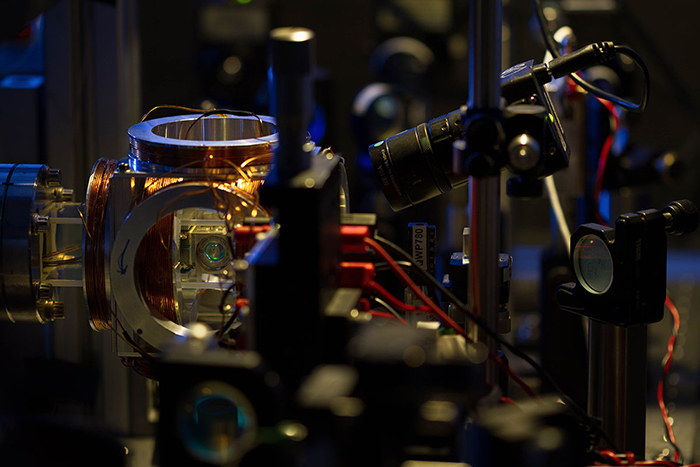Individual particles of light called photons are considered to have no mass, but that hasn't stopped scientists from figuring out to precisely mould them into shapes up to 4 metres (13.1 feet) long.
In testing the ways light interacts with matter, the researchers found that the specific shape of a photon alters its effect on an atom. The discovery not only tells us more about the nature of light, but could also inform the development of the quantum technologies we'll use in the future.
The team from the National University of Singapore has been shaping photons for several years now, but has finally managed to see how these light-matter interactions work on an atomic scale in more detail than ever before.
"Our experiments look at the most fundamental interaction between matter and light," says one of the team, Victor Leong.
The research is based on the principle that when a photon hits an atom, the light the photon was carrying gets transferred to the atom. The atom then emits new photons at different wavelengths, with new properties.
Sometimes the new photons are reflected and transmit the colour of an object to our eyes. Other times they can be absorbed, and used to power chemical reactions such as photosynthesis, where the Sun's photons are converted to chemical energy.
What the researchers wanted to demonstrate was that the absorption of a photon by an atom should mirror the emission of a photon by an atom – in other words, the two events should be the inverse of each other, and their probabilities of occurring should be related.
To test this, the team used a complex setup of lenses and chemical reactions to generate two types of specific infrared photons. Both of these types were shaped like teardrops, but one started dimly and ended brightly, and the other appearing the other way round.
 The team trapped a single atom inside a cube of copper-wire coils. Credit: Alessandro Cerè / CQT, NUS
The team trapped a single atom inside a cube of copper-wire coils. Credit: Alessandro Cerè / CQT, NUS
After recording hundreds of millions of measurements taken over 1,500 hours, the team found that the photons that led with the dim end of the teardrop were about 50 percent more likely to be absorbed by a Rubidium atom than reflected.
This finding confirmed the 'mirror' hypothesis, because when photons reflect off atoms, they leave brightest-end first – the largest part of the teardrop shape.
That's the probability symmetry the scientists were looking for, but why does it matter?
Although much about quantum physics is still unknown, it's thought that by manipulating light-matter interactions, we can produce a new generation of sensors, communication networks, computers, and other types of devices.
Being able to knock atoms into excited states with photons could be one way of storing data in the quantum computers of tomorrow.
In the future, the potential of using photons as entangled particles that can be in multiple states at once could give quantum computers an incredible performance boost over today's simple binary data machines, as long as we can figure out how to build them.
That's where research like this comes in: figuring out those details means knowing more about photons and atoms, and the probability of them interacting.
As one of the team, Alessandro Cerè, puts it: "You can only engineer what you can understand."
So while these experiments may be largely theoretical right now, they could soon have major implications in the real world – and we're looking forward to seeing where this photon-shaping tech takes us next.
The findings are published in Nature Communications.
